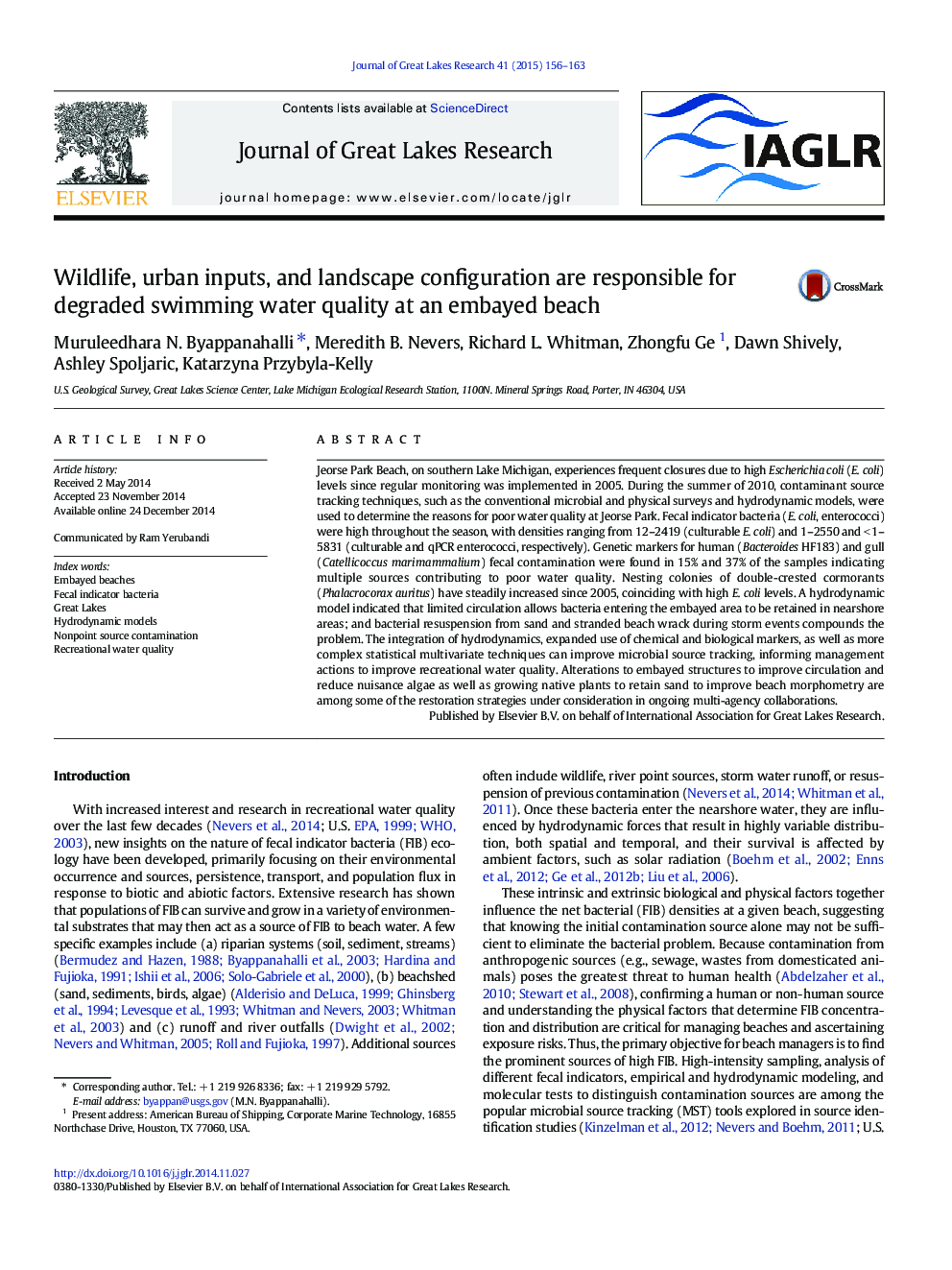| کد مقاله | کد نشریه | سال انتشار | مقاله انگلیسی | نسخه تمام متن |
|---|---|---|---|---|
| 6305156 | 1306682 | 2015 | 8 صفحه PDF | دانلود رایگان |
عنوان انگلیسی مقاله ISI
Wildlife, urban inputs, and landscape configuration are responsible for degraded swimming water quality at an embayed beach
ترجمه فارسی عنوان
حیات وحش، ورودی های شهری، و پیکربندی چشم انداز مسئول کیفیت آب شناور در آب های ساحلی است
دانلود مقاله + سفارش ترجمه
دانلود مقاله ISI انگلیسی
رایگان برای ایرانیان
کلمات کلیدی
سواحل فرو ریز، باکتری شاخص با مدفوع، دریاچه های بزرگ، مدل های هیدرودینامیکی، آلودگی منبع بدون نقطه، کیفیت آب استراحت،
موضوعات مرتبط
مهندسی و علوم پایه
علوم زمین و سیارات
علوم زمین و سیاره ای (عمومی)
چکیده انگلیسی
Jeorse Park Beach, on southern Lake Michigan, experiences frequent closures due to high Escherichia coli (E. coli) levels since regular monitoring was implemented in 2005. During the summer of 2010, contaminant source tracking techniques, such as the conventional microbial and physical surveys and hydrodynamic models, were used to determine the reasons for poor water quality at Jeorse Park. Fecal indicator bacteria (E. coli, enterococci) were high throughout the season, with densities ranging from 12-2419 (culturable E. coli) and 1-2550 and <Â 1-5831 (culturable and qPCR enterococci, respectively). Genetic markers for human (Bacteroides HF183) and gull (Catellicoccus marimammalium) fecal contamination were found in 15% and 37% of the samples indicating multiple sources contributing to poor water quality. Nesting colonies of double-crested cormorants (Phalacrocorax auritus) have steadily increased since 2005, coinciding with high E. coli levels. A hydrodynamic model indicated that limited circulation allows bacteria entering the embayed area to be retained in nearshore areas; and bacterial resuspension from sand and stranded beach wrack during storm events compounds the problem. The integration of hydrodynamics, expanded use of chemical and biological markers, as well as more complex statistical multivariate techniques can improve microbial source tracking, informing management actions to improve recreational water quality. Alterations to embayed structures to improve circulation and reduce nuisance algae as well as growing native plants to retain sand to improve beach morphometry are among some of the restoration strategies under consideration in ongoing multi-agency collaborations.
ناشر
Database: Elsevier - ScienceDirect (ساینس دایرکت)
Journal: Journal of Great Lakes Research - Volume 41, Issue 1, March 2015, Pages 156-163
Journal: Journal of Great Lakes Research - Volume 41, Issue 1, March 2015, Pages 156-163
نویسندگان
Muruleedhara N. Byappanahalli, Meredith B. Nevers, Richard L. Whitman, Zhongfu Ge, Dawn Shively, Ashley Spoljaric, Katarzyna Przybyla-Kelly,
